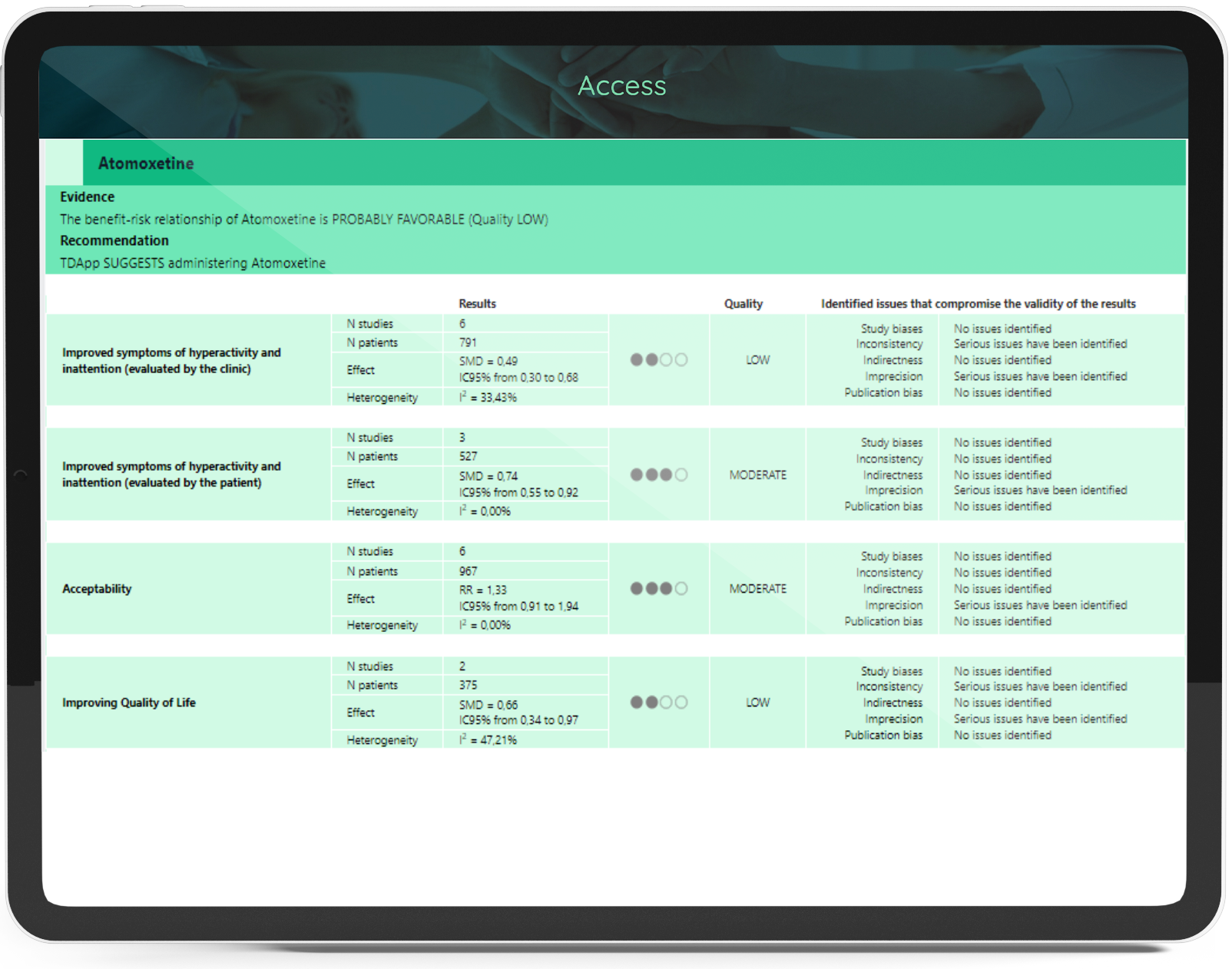How Evimatic® works
Evimatic® operates into four steps. Discover them!
Or if you already know them, start enjoying the advantages of the Evimatic® recommendation system.
Define the Patient
(the “P” in PICO)
The user specifies the patient’s health issue by selecting options that include age, gender, type of ADHD, severity of ADHD, and comorbidities.
Define the Intervention
(the “I” in PICO)
Currently, Evimatic® does not allow users to specify the type of intervention; instead, it analyzes all available options.
Define the Comparison
(the “C” in PICO)
At this stage, Evimatic® cannot specify the type of comparison. By default, it uses an inactive comparator: placebo for pharmacological interventions, waitlist or sham comparison for non-pharmacological interventions.
Define the Outcomes
(the “O” in PICO)
Since treatment decisions may be shared among clinicians, patients, and family members, Evimatic® allows multiple users to express their therapeutic objectives. The following steps are required:
- Indicate the number of users.
- Specify the type of user (e.g., clinician, patient, family member).
- Select desired therapeutic outcomes from a predefined list. For each outcome, the user must indicate whether it is “critical”, “important” or “not important”. A critical outcome is a must-achieve goal with treatment. For example, in efficacy therapeutic outcomes, results must outperform the inactive control, while in critical adverse effects, results must not exceed those of the inactive control.
Currently, Evimatic® only allows for one user and up to four critical outcomes, one of which must be acceptability.
All PICO elements selected
- Favorable green
- Uncertain: orange
- Unfavorable: red
For users in regions where legal frameworks permit, Evimatic® may also provide treatment recommendations.
Quantitative and qualitative analysis
Users can click on any intervention to access a dropdown table showing the quantitative and qualitative analysis of evidence for the treatment’s efficacy and adverse effects. This analysis explains the benefit-risk ratio assessment.
For highly complex PICO questions, insufficient evidence may make it impossible to perform a benefit-risk analysis. In such cases, the user may need to simplify the query by reducing the number of comorbidities or therapeutic goals (outcomes).
The following sections provide users with detailed information on ADHD, its impacts, available medications, and associated side effects. This information aims to assist users in determining their treatment preferences.
Information about ADHD
Evimatic® offers you all the information sections where, as a user, you can access information about ADHD, its repercussions, the available medications and the adverse effects they produce.
We hope that this information will be useful in deciding on ADHD treatment preferences.
If you want to ask a clinical question about ADHD therapy with Evimatic®, access the recommender system.



















